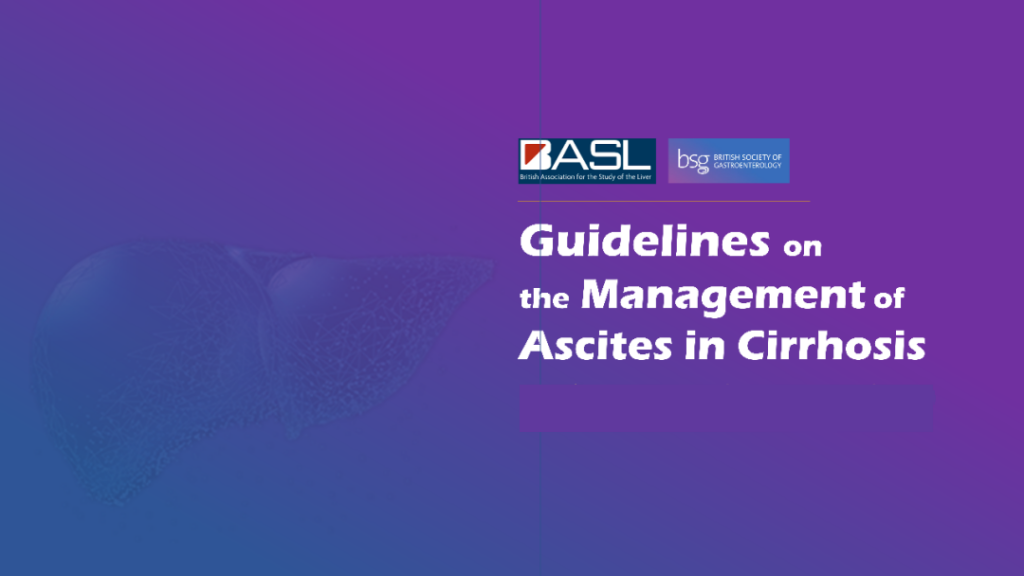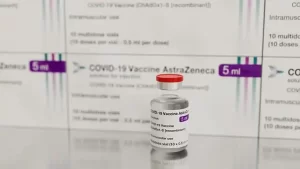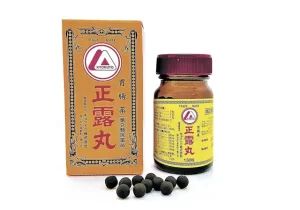2020 BASL Guidelines on Management of Ascites in Cirrhosis
- AstraZeneca Admits for the First Time that its COVID Vaccine Has Blood Clot Side Effects
- Gut Bacteria Enzymes Offer Hope for ABO Universal Blood Transfusions
- Well-Known Japanese Medicine Exposed for 30 Years of Data Falsification
- Oregon Reverses Course: From Decriminalization to Recriminalization of Drug Possession
- Why Lecanemab’s Adoption Faces an Uphill Battle in US?
- Yogurt and High LDL Cholesterol: Can You Still Enjoy It?
2020 BASL Guidelines on Management of Ascites in Cirrhosis
2020 BASL Guidelines on Management of Ascites in Cirrhosis. In recent years, significant progress has been made in the field of ascites due to liver cirrhosis.

In the UK, about 55% of adult ascites patients are caused by cirrhosis. Ascites is an important sign of the progression of liver cirrhosis. About 20% of patients with liver cirrhosis have ascites as the first clinical manifestation, and the fatality rate can reach 20% in the first year after the diagnosis of ascites.
In recent years, significant progress has been made in the field of ascites due to liver cirrhosis. To this end, the British Gastroenterology Society and the British Hepatology Research Society jointly formulated this guideline to review current research evidence to guide the clinical diagnosis and treatment of ascites due to cirrhosis.
The guideline expert committee of this department comprehensively searched the literature and systematically analyzed the diagnostic methods of patients with ascites, spontaneous bacterial peritonitis, diuretic use, abdominal puncture, human albumin use, transjugular intrahepatic portosystemic shunt and beta receptor blockade. Systematic review studies, prospective and retrospective original studies, expert opinions, and some case reports on the use of retardants have finally made specific recommendations.
This guide assesses the quality of evidence based on the “Graded Evaluation, Development and Evaluation of Evidence Recommendation (GRADE) system” .
1 Diagnostic abdominal puncture for new ascites
Recommendations:
(1) It is recommended to perform diagnostic peritoneal puncture for all patients with new-onset ascites. (B1)
(2) The preliminary routine examination of ascites should include total ascites protein and serum-ascites albumin gradient. (B1)
(3) Based on the preliminary routine examination results of ascites, consider testing the following indicators in patients with new-onset ascites: cytology, amylase, brain natriuretic peptide and adenosine deaminase. (B2)
2 Spontaneous bacterial peritonitis (SBP)
Recommendations:
(1) For patients with liver cirrhosis accompanied by ascites at the time of admission, diagnostic abdominal puncture should be performed as soon as possible to rule out the possibility of SBP. (B1)
(2) For patients with gastrointestinal bleeding, shock, fever or other systemic inflammatory manifestations, gastrointestinal symptoms, hepatic encephalopathy, and deterioration of liver and kidney function, diagnostic abdominal puncture should be performed. (B1)
(3) Ascites neutrophil count> 250 cells/mm3 is still the gold standard for diagnosis of SBP, and the counting results can be obtained by direct counting under a microscope or automatic counting and classification of cells using flow cytometry. (B1)
(4) If SBP is suspected in patients with ascites, the ascites should be drawn from the bedside and injected directly into the blood culture bottle for ascites culture before antibiotics are used. (B1)
(5) Before initiating empirical anti-infection treatment, the source of SBP (community-acquired or iatrogenic), the severity of the infection, and the characteristics of local bacterial resistance should be fully considered. Although the research on the application of cefotaxime has been extensive, the selection of antibiotics should still be guided by the local bacterial resistance characteristics and targeted treatment options. (B1)
(6) For patients with poor therapeutic effect or suspected of secondary bacterial peritonitis, a second diagnostic abdominal puncture should be performed 48 hours after the start of treatment to evaluate the efficacy of antibiotics. (C2)
(7) For patients with liver cirrhosis with ascites and gastrointestinal bleeding, preventive anti-infection treatment should be given (cefotaxime has been extensively studied, but it is still guided by local bacterial resistance data) to prevent the occurrence of SBP . (A1)
(8) For patients after SBP is cured, the use of norfloxacin (400 mg, 1 time/d), ciprofloxacin (500 mg, 1 time/d, oral) or compound trimethoprim (sulfamethoxazole) should be considered. Oxazole 800 mg once/d and trimethoprim 160 mg once/d orally) were treated to prevent the recurrence of SBP. (C2)
(9) For high-risk patients with ascites protein concentration <1.5 g/dl, primary prevention of SBP should be given. However, the potential risks and benefits of preventive treatment and the uncertainties should be explained to the patient. (C2)
3 Limit sodium intake
Recommendations:
(1) Patients with liver cirrhosis and ascites should appropriately limit their sodium intake, and the daily sodium intake should not exceed 5 to 6.5 g (87 to 113 mmol sodium). In other words, do not add extra salt when cooking, and avoid ingesting processed foods. (B1)
(2) Patients with liver cirrhosis and ascites should receive salt restriction education. (C1)
4 Diuretics
Recommendations:
(1) For patients with moderate ascites for the first time, spironolactone monotherapy is recommended (the initial dose is 100 mg, and the maximum can be increased to 400 mg). For patients with recurrent severe ascites, if a faster diuretic effect (such as hospitalized patients) is required, spironolactone (initial dose 100 mg, up to 400 mg) combined with furosemide (initial dose 40 mg, up to 160 mg) treatment. (B1)
(2) All patients who initiate diuretic therapy should be monitored for adverse reactions. Most adverse events caused by diuretics require discontinuation or reduction of drug dosage. (C2)
(3) For patients with hypovolemic hyponatremia during diuretic treatment, diuretics should be discontinued and normal saline should be injected for volume expansion. (C2)
(4) For patients with clinical hypervolemia and severe hyponatremia (serum sodium <125 mmol/L), the daily fluid intake should be limited to 1~1.5 L. (C2)
(5) For patients with acute hyponatremia with severe clinical symptoms, hypertonic sodium chloride (3%) should be used to slowly correct the serum sodium concentration. (C2)
(6) On the basis of individualized treatment, midodrine can be considered for the treatment of refractory ascites. (C2)
5 Large abdominal puncture and aspiration of ascites (LVP)
Recommendations:
(1) The patient’s informed consent should be obtained before diagnostic or therapeutic abdominal paracentesis. (C1)
(2) It is recommended to perform LVP under ultrasound guidance to reduce the risk of adverse events. (C2)
(3) Before undergoing diagnostic or therapeutic abdominal puncture in patients with liver cirrhosis and ascites, the prothrombin time and platelet count of the patients should be routinely tested. Blood product transfusion is not recommended. (B1)
6 Use of human serum albumin solution
Recommendations:
(1) When the volume of ascites aspirated by peritoneal puncture is more than 5 L, 8 g human albumin (20% or 25% solution) is given at the same time for every 1 L of ascites aspirated. (A1)
(2) For patients with chronic onset acute liver failure or high-risk patients with acute kidney injury after ascites aspiration by abdominal puncture, even if the volume of ascites is less than 5 L, 8 g can be infused for every 1 L of ascites aspirated. Blood albumin (20% or 25% solution). (C2)
(3) For patients with SBP, if the serum creatinine level has increased or the serum creatinine level has increased progressively, it is recommended to infuse human albumin 1.5 g/kg within 6 hours after diagnosis, and then inject it again on the third day Human albumin 1 g/kg. (C2)
7 Transjugular intrahepatic portosystemic shunt (TIPS)
Recommendations:
(1) Patients with refractory ascites should consider TIPS therapy. (A1)
(2) For those who are older than 70 years old, serum bilirubin >50 μmol/L, platelet count <75×10^9/L, MELD score ≥18 points, hepatic encephalopathy, active infection or hepatorenal syndrome Patients should carefully consider TIPS treatment. (B1)
8 Umbilical hernia
Recommendations:
Patients should discuss with a multidisciplinary team (including physicians, surgeons, and anesthesiologists) the suitability and timing of umbilical hernia repair. (C1)
9 Hepatic pleural effusion
Recommendations:
(1) After multidisciplinary group discussion, patients with hepatic pleural effusion should consider TIPS treatment. (C1)
(2) For patients with hepatic pleural effusion who have not received TIPS treatment or liver transplantation evaluation, other palliative interventions should be considered. (C1)
10 Non-selective beta blockers (NSBB) and ascites
Recommendations:
(1) Refractory ascites should not be regarded as a contraindication for NSBB. (B1)
(2) Patients with refractory ascites should be closely tested after taking NSBB; if patients have hypotension or acute/progressive renal insufficiency, the dose should be reduced or the drug should be discontinued. (B1)
11 Automatic low-flow ascites pump
Recommendations:
Only in special cases where clinical management, review, or research conditions are sound, automatic low-flow ascites pumps should be considered. (C2)
12 Palliative care
Recommendations:
For patients with refractory ascites who have not undergone liver transplantation evaluation, it is recommended to switch to palliative care. In addition to repeated LVP, palliative interventions should also be considered for patients with refractory ascites. (C1)
13 Suggestions for future research on ascites
Recommendations:
(1) A large randomized controlled trial should be conducted to evaluate the role of antibiotics in the secondary prevention of SBP in patients with cirrhosis and ascites.
(2) A large randomized controlled trial should be conducted to evaluate the role of midodrine in the management of ascites.
(3) The cost-effectiveness of long-term use of human albumin in patients with decompensated liver cirrhosis and ascites should be evaluated.
(4) The role of nutritional intervention in ascites management should be evaluated.
(5) A large-sample randomized controlled trial should be conducted to explore the effect of long-term use of carvedilol in patients with refractory ascites without high-risk esophageal varices.
(6) Compare the effects of TIPS and other interventions in the management of hepatic pleural effusion.
(7) Assess the cost-effectiveness of the automatic low-flow ascites pump and its impact on the quality of life of patients with refractory ascites.
(8) Randomized controlled trials should be conducted to evaluate the effectiveness and safety of long-term peritoneal drainage in the palliative treatment of patients with liver cirrhosis and refractory ascites.
(source:internet, reference only)
Disclaimer of medicaltrend.org



